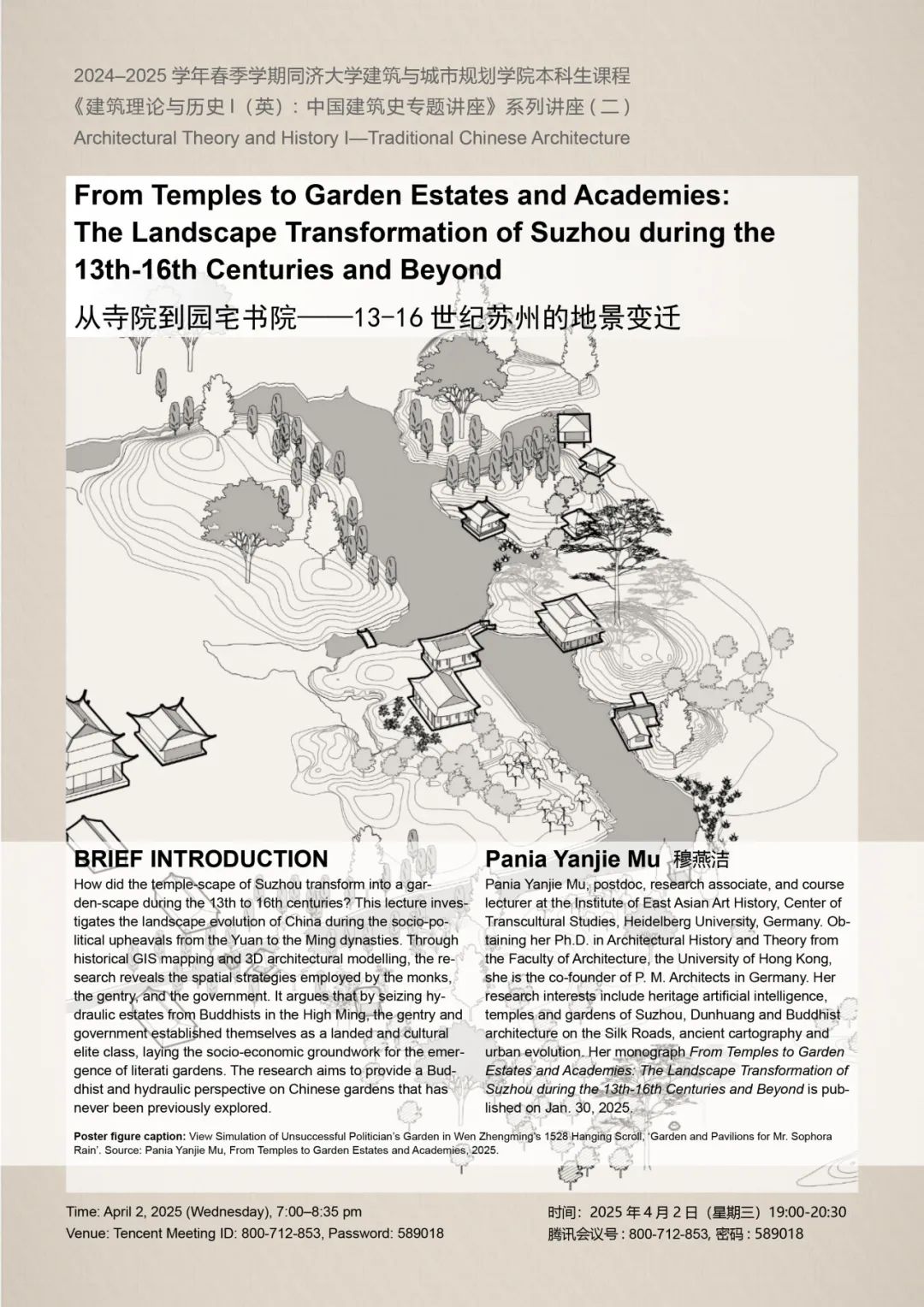
Architectural Theory and History I:
Traditional Chinese Architecture
From Temples to Garden Estates and Academies:
The Landscape Transformation of Suzhou during the 13th-16th Centuries and Beyond

Lecturer
Pania Yanjie Mu
Pania Yanjie Mu, postdoc, research associate, and course lecturer at the Institute of East Asian Art History, Center of Transcultural Studies, Heidelberg University, Germany. Obtaining her Ph.D. in Architectural History and Theory from the Faculty of Architecture, the University of Hong Kong, she is the co-founder of P. M. Architects in Germany. Her research interests include heritage artificial intelligence, temples and gardens of Suzhou, Dunhuang and Buddhist architecture on the Silk Roads, ancient cartography and urban evolution. Her monograph From Temples to Garden Estates and Academies: The Landscape Transformation of Suzhou during the 13th-16th Centuries and Beyond is published on Jan. 30, 2025.
Brief Introduction
How did the temple-scape of Suzhou transform into a garden-scape during the 13th to 16th centuries? This lecture investigates the landscape evolution of China during the socio-political upheavals from the Yuan to the Ming dynasties. Through historical GIS mapping and 3D architectural modelling, the research reveals the spatial strategies employed by the monks, the gentry, and the government. It argues that by seizing hydraulic estates from Buddhists in the High Ming, the gentry and government established themselves as a landed and cultural elite class, laying the socio-economic groundwork for the emergence of literati gardens. The research aims to provide a Buddhist and hydraulic perspective on Chinese gardens that has never been previously explored.
Time
April 2, 2025 (Wednesday) , 19:00–20:35
Venue
Tencent Meeting ID: 800-712-853
Password: 589018
Reference
Mu, Pania Yanjie. From Temples to Garden Estates and Academies: Landscape Transformation of Suzhou during 13th-16th Centuries and Beyond. London; New York: Routledge Press, 2025.
Mu, Pania Yanjie, Sarah E. Fraser, and Maolin Peng. ‘Simulating Urban Evolution by H-GIS and H-BIM: A Temporal and Spatial Study of Pingjiang Map’. Heritage Science 12, no. 1 (11 November 2024): 392. https://doi.org/10.1186/s40494-024-01507-8.
 ABOUT US
ABOUT US




